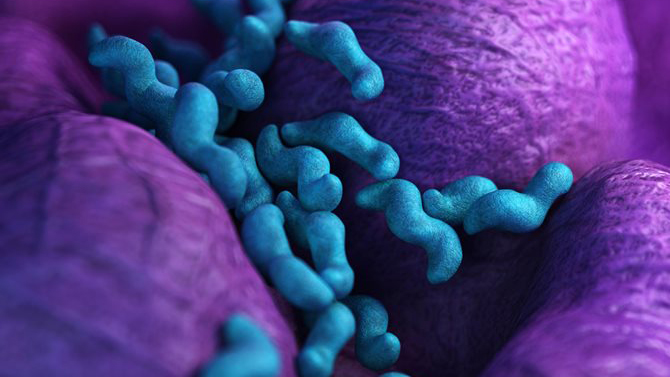A Comparative Study of Thermophilic Campylobacter Isolates of Clinical and Food Origin

- Project start date: 1 March 2001
- Project status: Completed
- Discipline: Microbiology and food hygiene
- Author/s: Dr Paul Whyte, University College Dublin
- Collaborator/s: Dr Cyril Carroll, National University of Ireland, Galway, Prof Martin Cormican University College Hospital, Galway, Dr Robert Madden Queen’s University Belfast, Dr Eleanor McNamara, Public Health Laboratory, Dublin, Dr John Moore, Public Health Laboratory, Belfast
Research objective
The objective of this study was to investigate the role of foods and companion animals in the epidemiology of Campylobacter infection in humans on the island of Ireland. The research aimed to determine the prevalence of Campylobacter in various retail foods and in cats and dogs from animal rescue shelters, and to compare these isolates with those from human clinical cases of enteritis. The study utilized a combination of selective enrichment, plating on selective media, and various genotyping techniques such as flagellin gene typing, Pulsed Field Gel Electrophoresis (PFGE), and Amplified Fragment Length Polymorphism (AFLP) to characterize and compare the isolates from food, pets, and humans.
Outputs
Research report
- Title: A Comparative Study of Thermophilic Campylobacter Isolates of Clinical, Food and Pet Origin
- Date: 6 February 2016
- Summary: Recent research, funded by safefood, has indicated a high occurrence of the food poisoning bacterium, Campylobacter in raw poultry, particularly chicken, with 49.9% of retail samples of raw chicken testing positive for the bacterium.
- Findings:
Food samples:
- Campylobacter prevalence: chicken (49.9%), turkey (37.5%), duck (45.8%), beef (3.2%), pork (5.1%), lamb (11.8%), pork pâté (0.8%), oysters (2.3%), mushrooms (0.9%), and raw milk (1.6%).
- No Campylobacter found in comminuted pork puddings, prepared vegetables, salads, retail sandwiches, or cheeses from unpasteurised milk.
- Total of 543 Campylobacter isolates from food: 83.4% C. jejuni, 16.6% C. coli.
Companion animals:
- Dogs and cats at animal shelters had high Campylobacter carriage rates: 51.1% in dogs and 75% in cats at Shelter 1; 87% in dogs at Shelter 2.
- Younger animals had higher isolation rates.
- No significant difference in prevalence between symptomatic and asymptomatic dogs at Shelter 2.
Human clinical cases:
- Predominant species: C. jejuni (95.9%).
- Genotyping Results:
- PFGE demonstrated high strain discrimination.
- 28.3% human clinical and 28.9% food isolates shared common genotypic profiles.
- No common clustering between pet and human clinical isolates with PFGE.
Antimicrobial resistance:
- High levels of resistance observed in both food and human isolates.
- Multi-drug resistance prevalent: 81.2% in food isolates, 93.2% in human isolates.
- Recommendations:
Food safety:
- Implement stringent measures to control Campylobacter contamination in poultry and other foods.
- Promote safe handling and cooking practices to reduce human infection risks.
Public health policy:
- Enhance monitoring and control of antimicrobial resistance in Campylobacter isolates from both food and clinical sources.
- Investigate alternative measures to reduce multi-drug resistance.
Animal health:
- Regular screening and management of Campylobacter in companion animals, particularly in rescue shelters, to minimise potential transmission risks to humans.
Other outputs
Whyte, P.; McGill, K., Cowley, D.; Madden, R.H.; Moran, L.; Scates, P., Carroll, C.; O’Leary, A., Fanning S.; Collins, J.D.; McNamara, E.; Moore, J.E.; Cormican, M. (2004). “Occurrence of Campylobacter in retail foods in Ireland”. International Journal of Food Microbiology. 95, 111-118.
Acke, E.; Whyte, P.; Jones, B.R.; McGill, K.; Collins, J.D.; Fanning, S. “Prevalence of thermophillic Campylobacter species in cats and dogs in two Irish animal shelters”. (2006). Veterinary Record, 158, 51-54.
McGill, K., Cowley, D., Moran, L., Scates, P., O’Leary, A., Madden, R.H., Carroll, C., McNamara, E., Moore, J.E., Fanning, S., Collins, J.D., Whyte, P. (2006). “Antibiotic resistance of retail food and human Campylobacter isolates on the island of Ireland from 2001-2002”. Epidemiology and Infection, 134, 1282-1291.
Acke, E., McGill, K., Golden, O., Jones, B.R., Fanning, S., Whyte, P. (2009). “Prevalence of thermophilic Campylobacter species in household pets in Ireland”. Veterinary Record, 164, 44-47.
Acke, E., McGill, K., Quinn, T., Jones, B.R., Fanning, S., Whyte, P. (2009). “Antimicrobial resistance profiles and mechanisms of resistance in Campylobacter jejuni isolates from pets”. Foodborne Pathogens and Disease, 6, 705-710.
O’Leary, A., Whyte, P., Madden, R.H., Cormican, M., Moore, J.E., McNamara, E., McGill, K., Kelly, L., Cowley, D., Moran, L., Scates, P., Collins, J.D, Carroll, C.V. “Pulsed Field Gel Electrophoresis typing of human and retail foodstuff campylobacters: an Irish perspective”. Journal of Food Microbiology, October 2010.
Acke, E., Carroll, C., O’Leary, A., McGill, K., Kelly, L., Lawlor, A., Madden, R.H., Moran, L., Scates, P., McNamara, E., Moore, J.E., Jones, B.R., Fanning, S., Whyte, P. “Genotypic characterisation and cluster analysis of Campylobacter jejuni isolates from domestic pets, human clinical cases and retail food”. Irish Veterinary Journal, January 2011.



